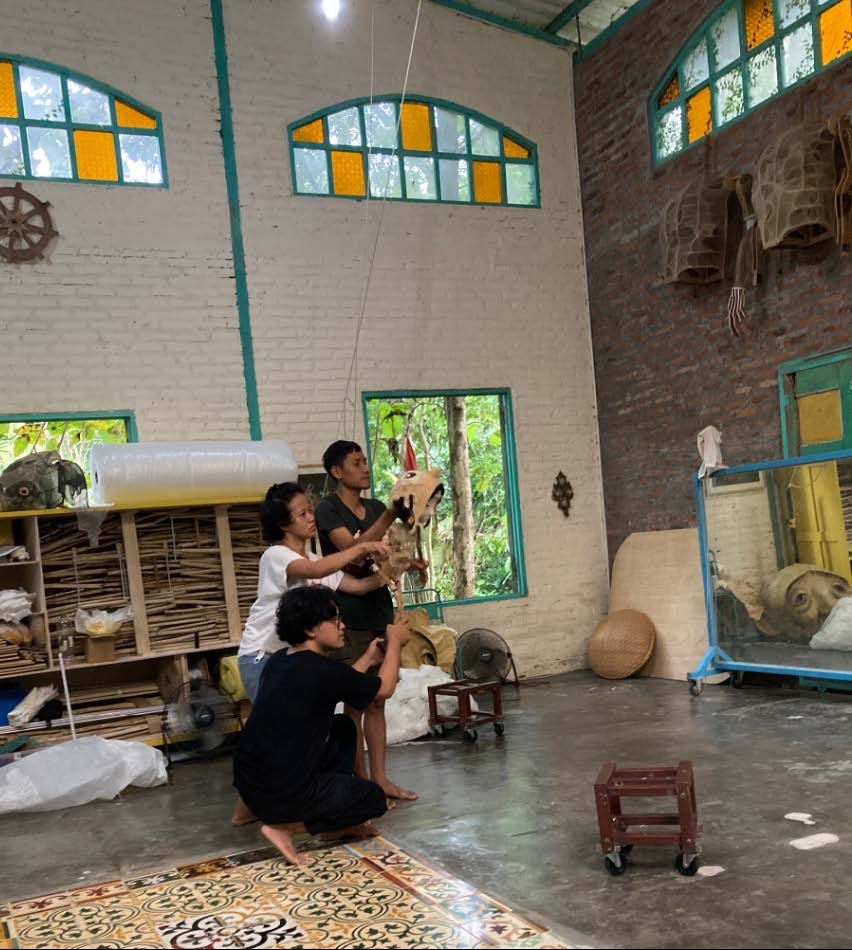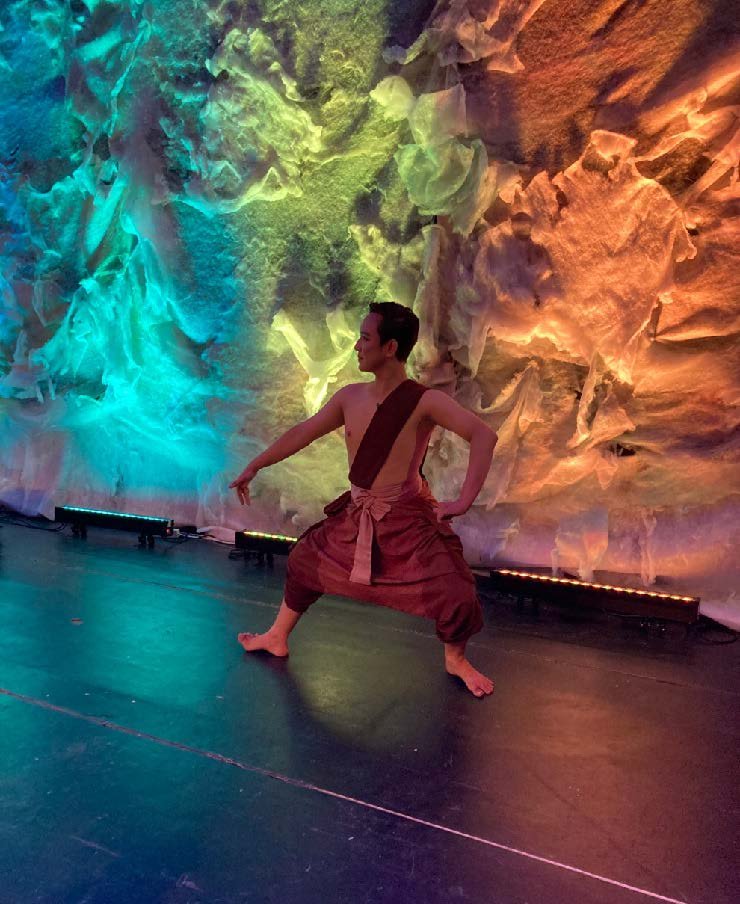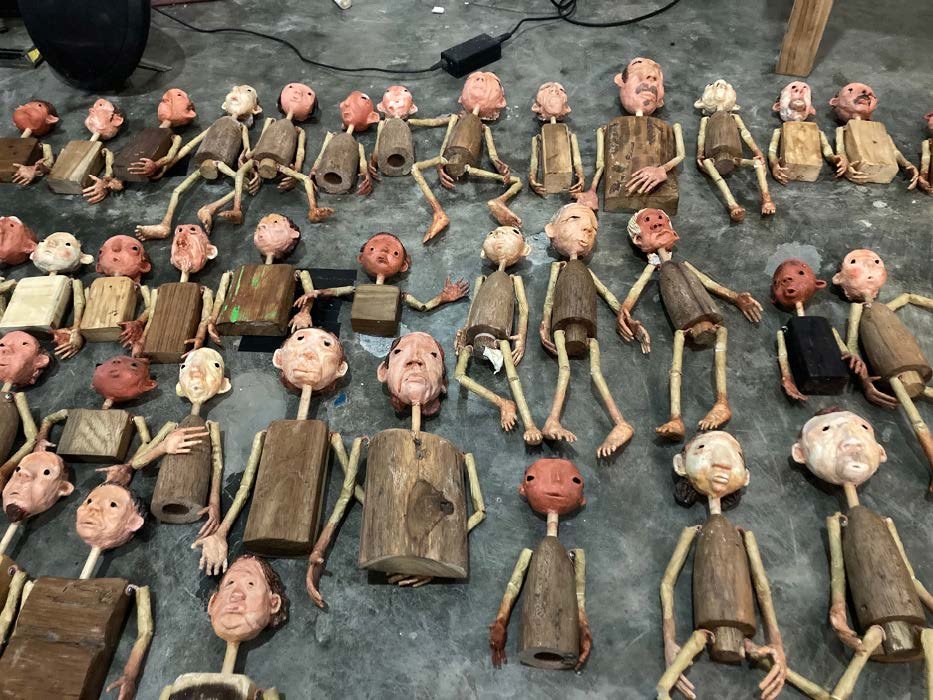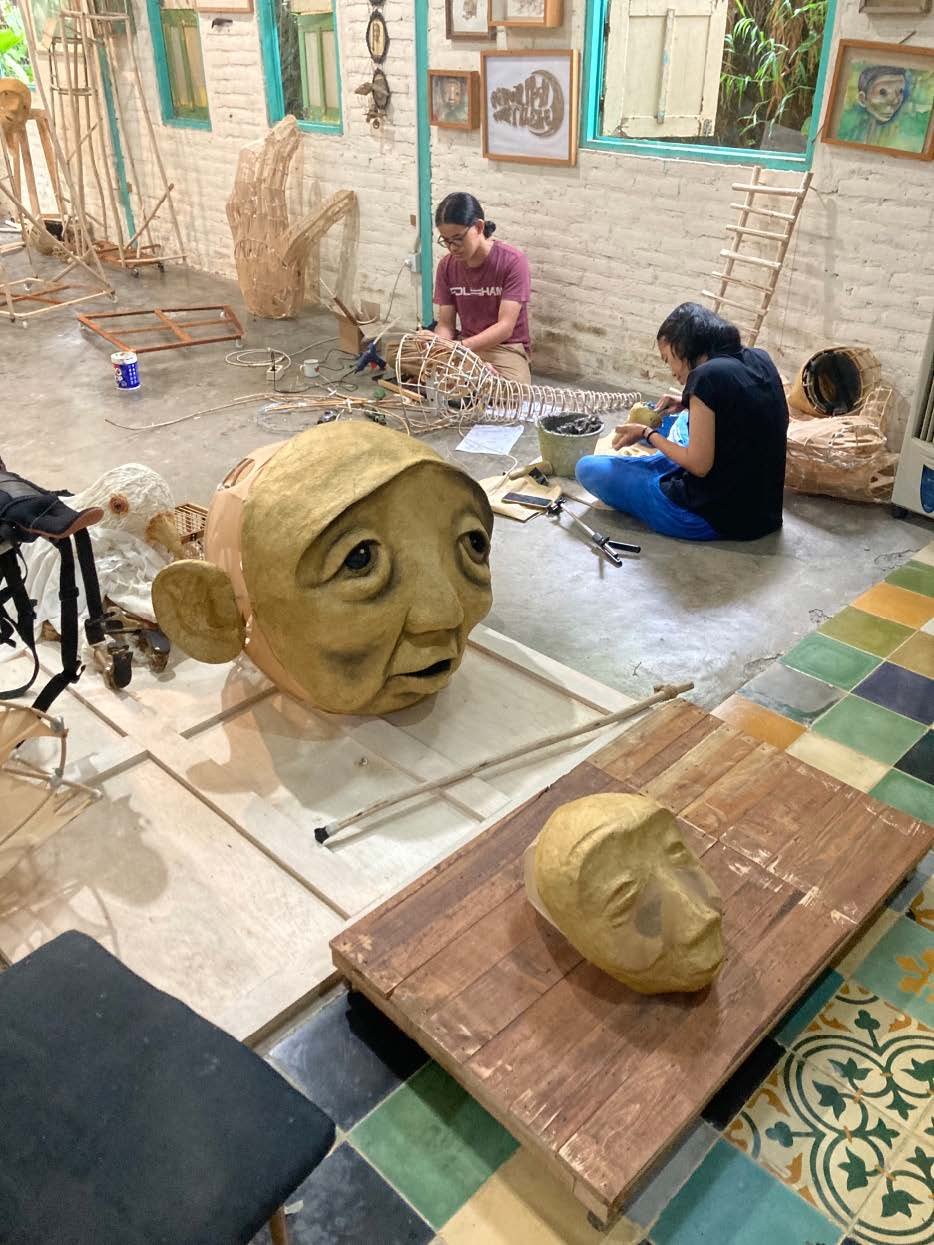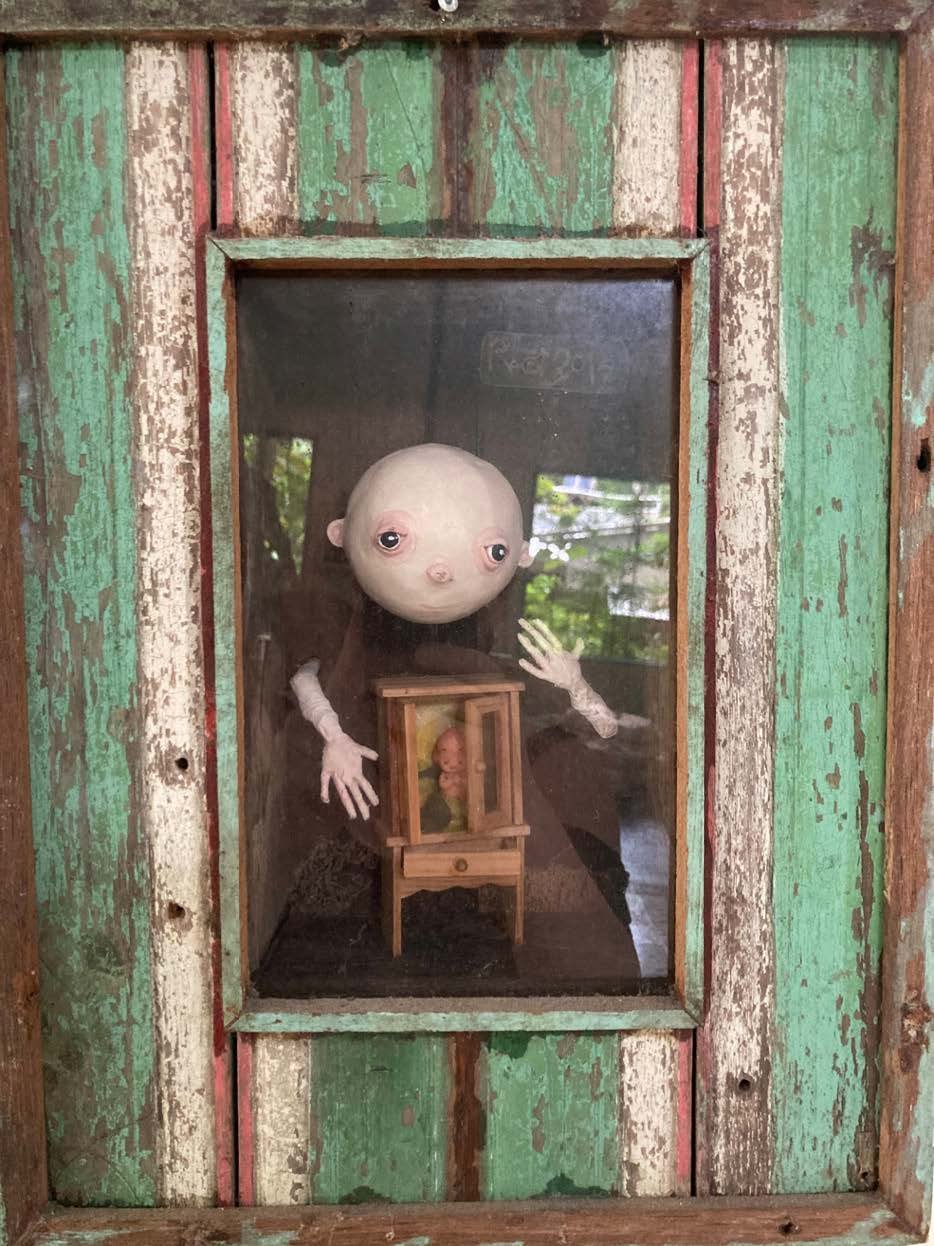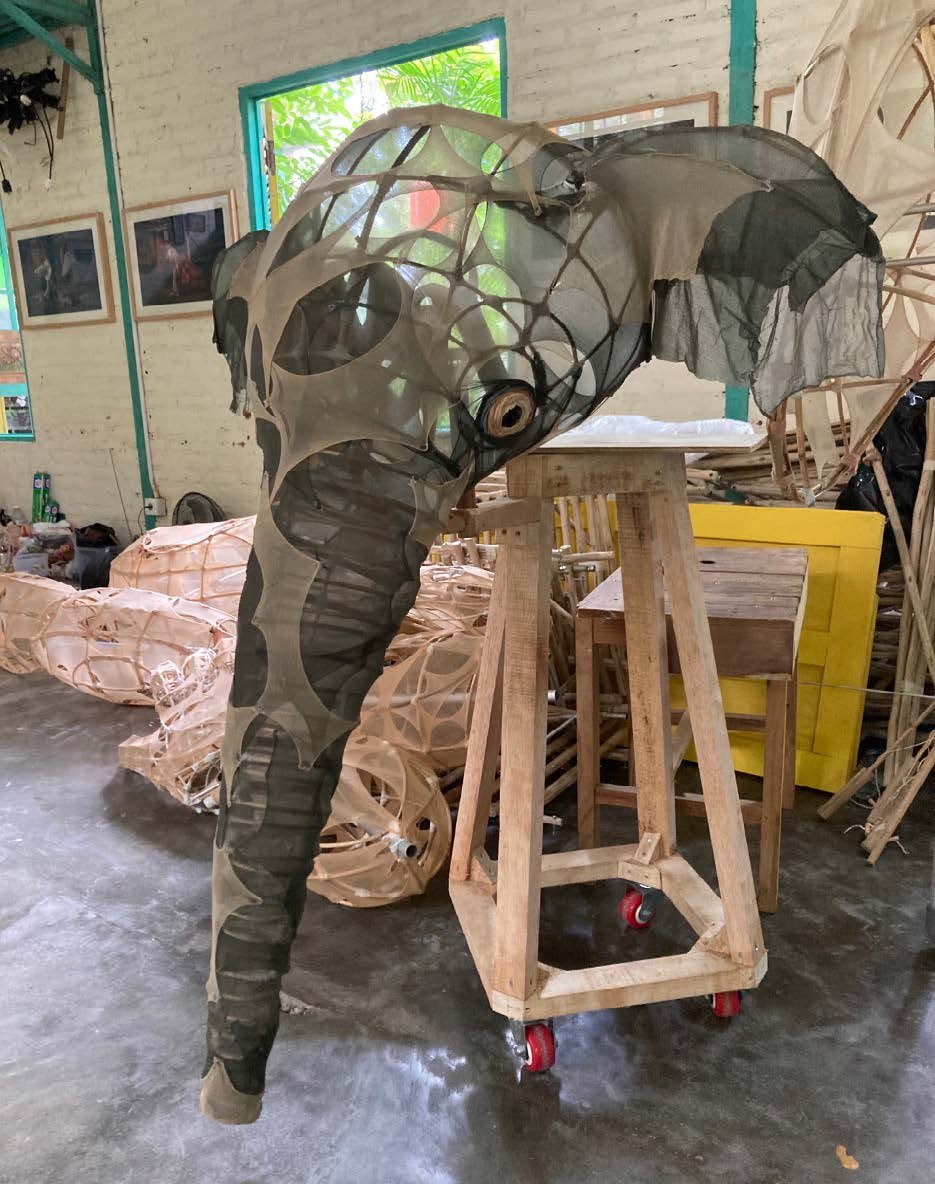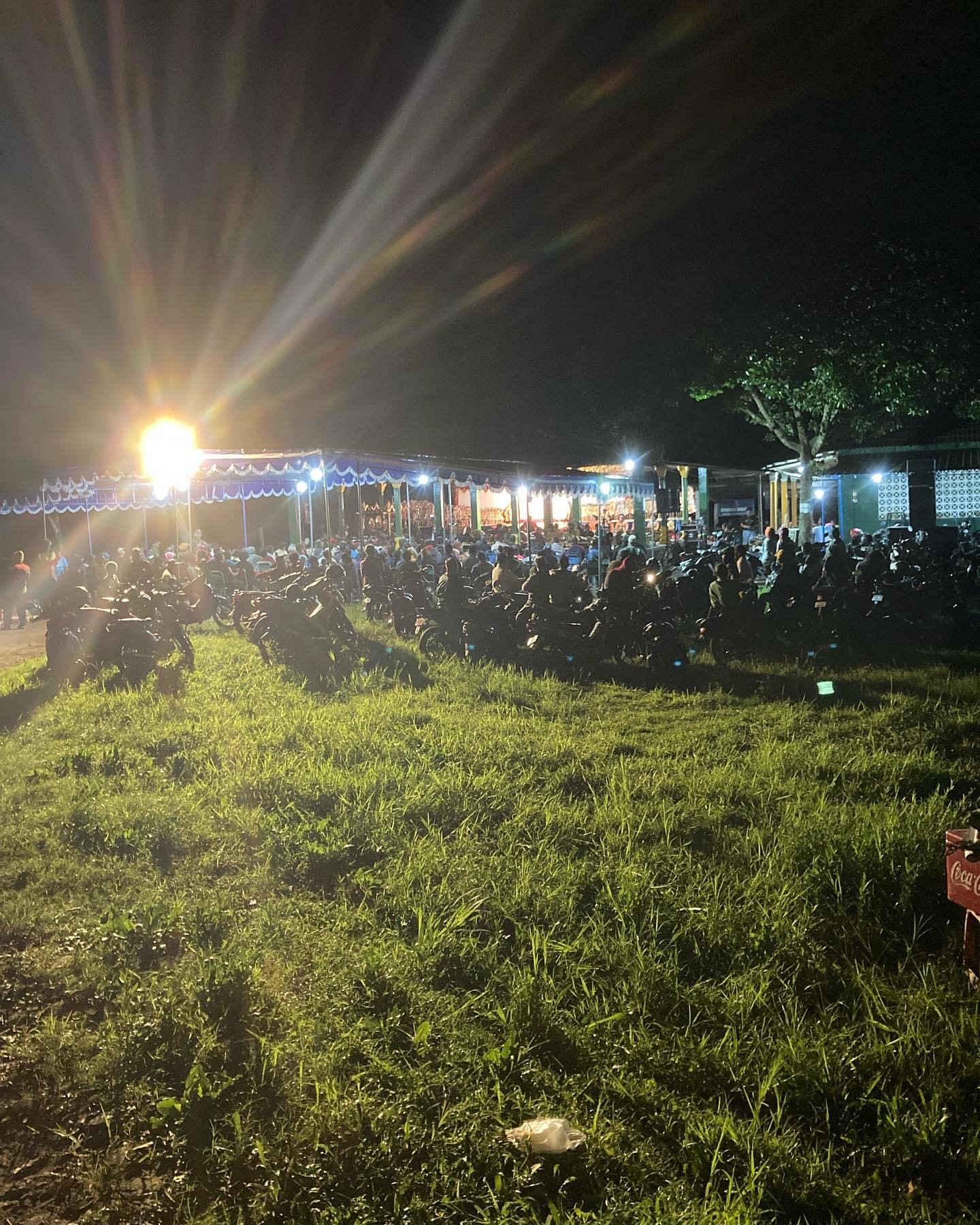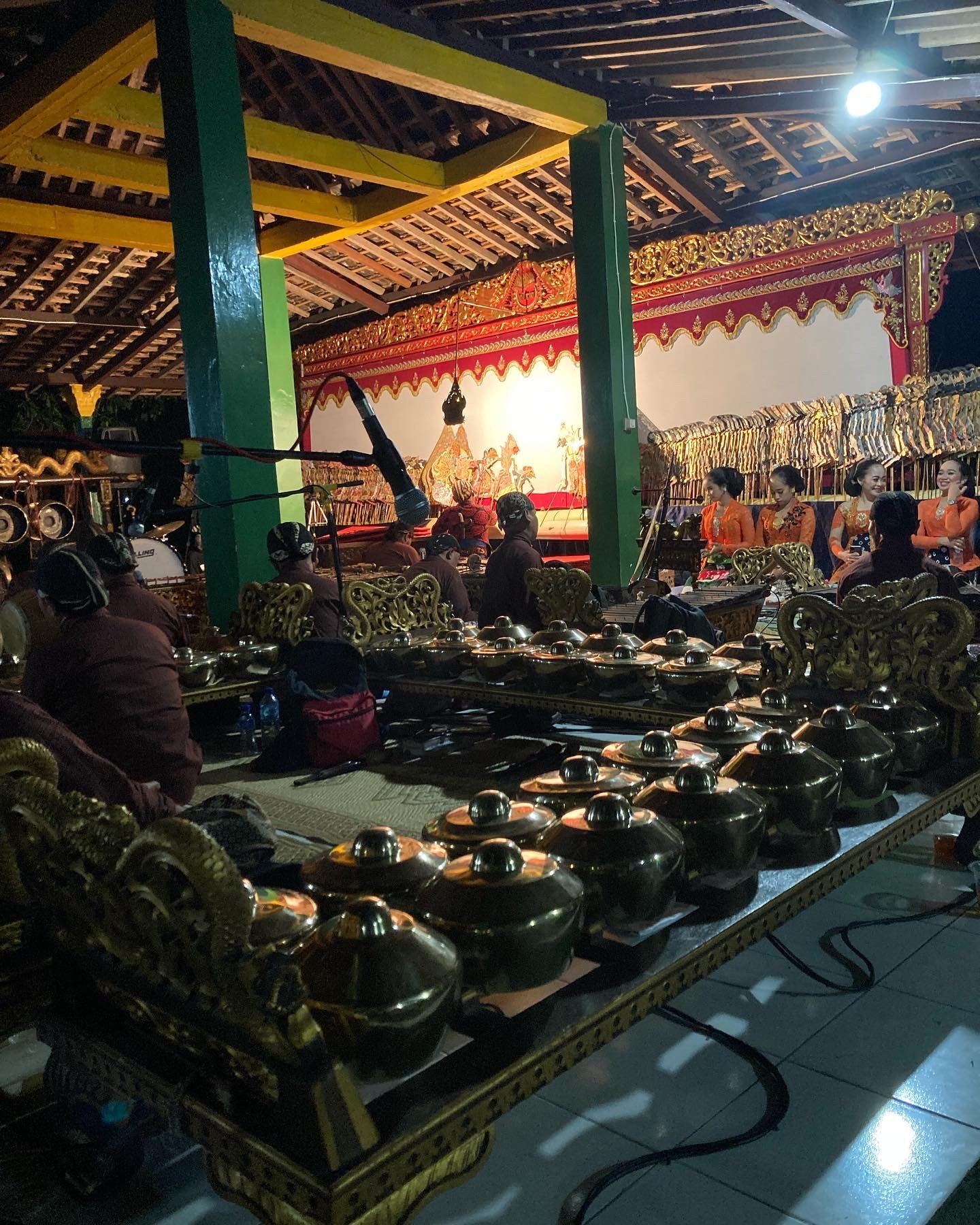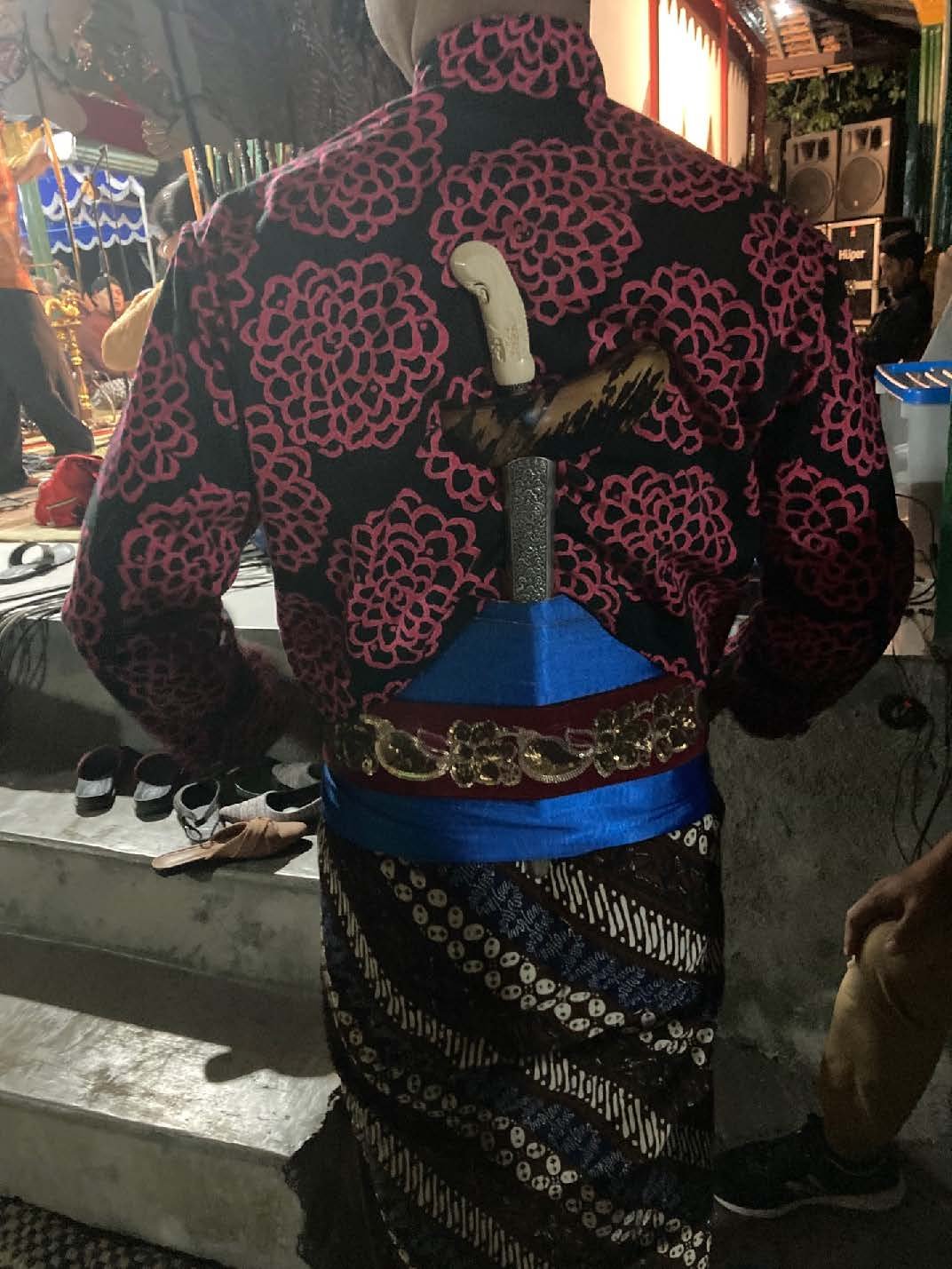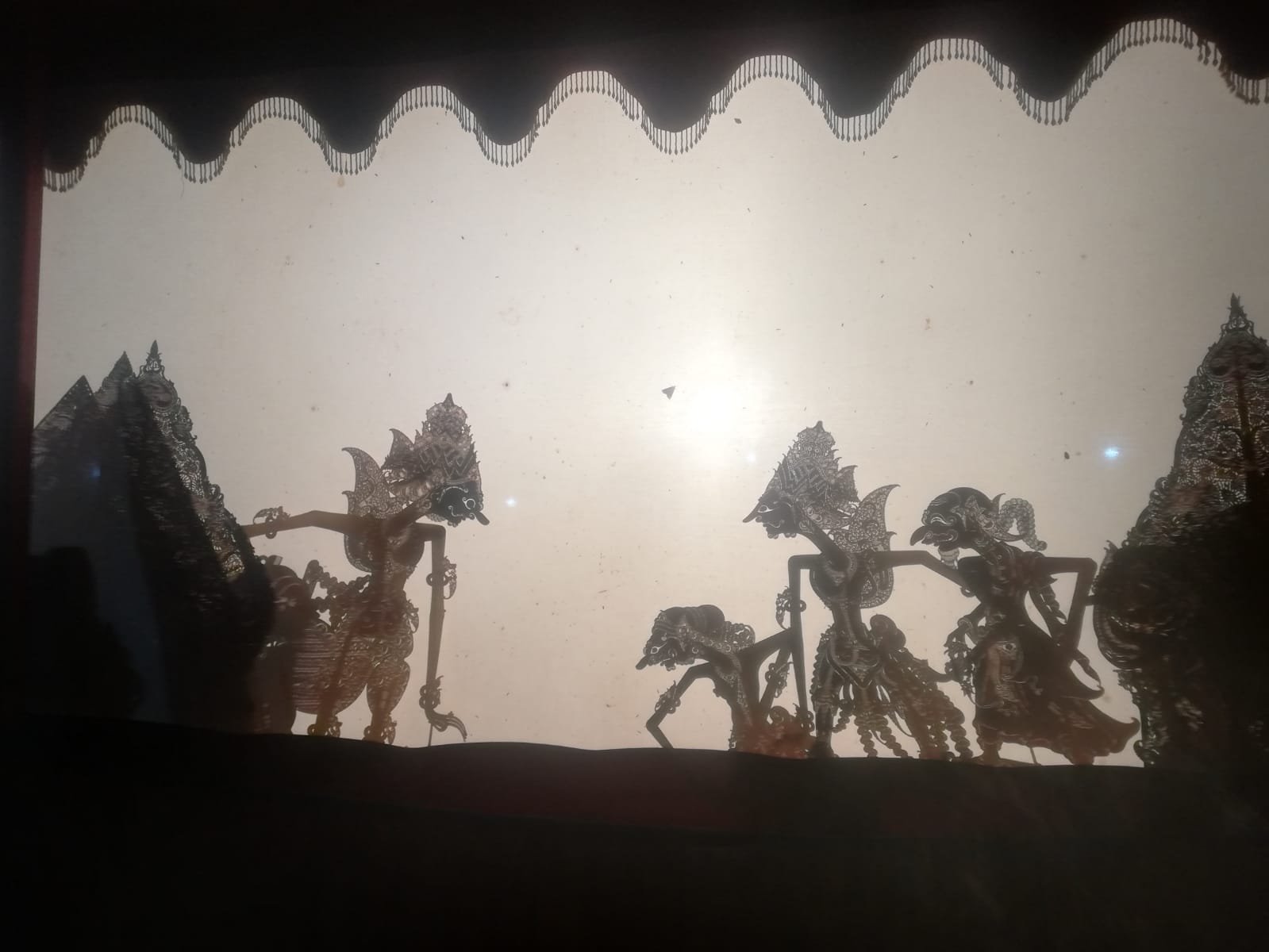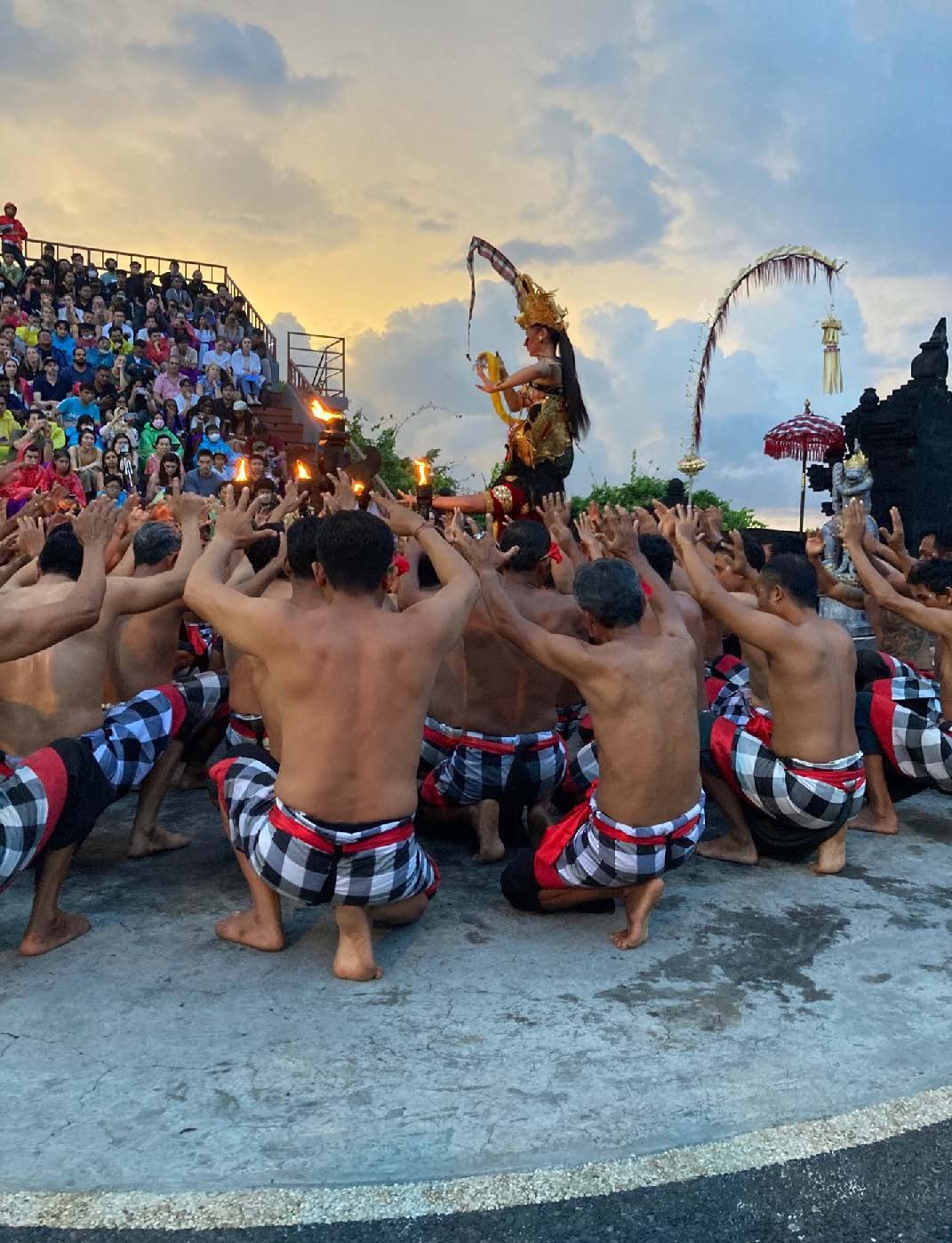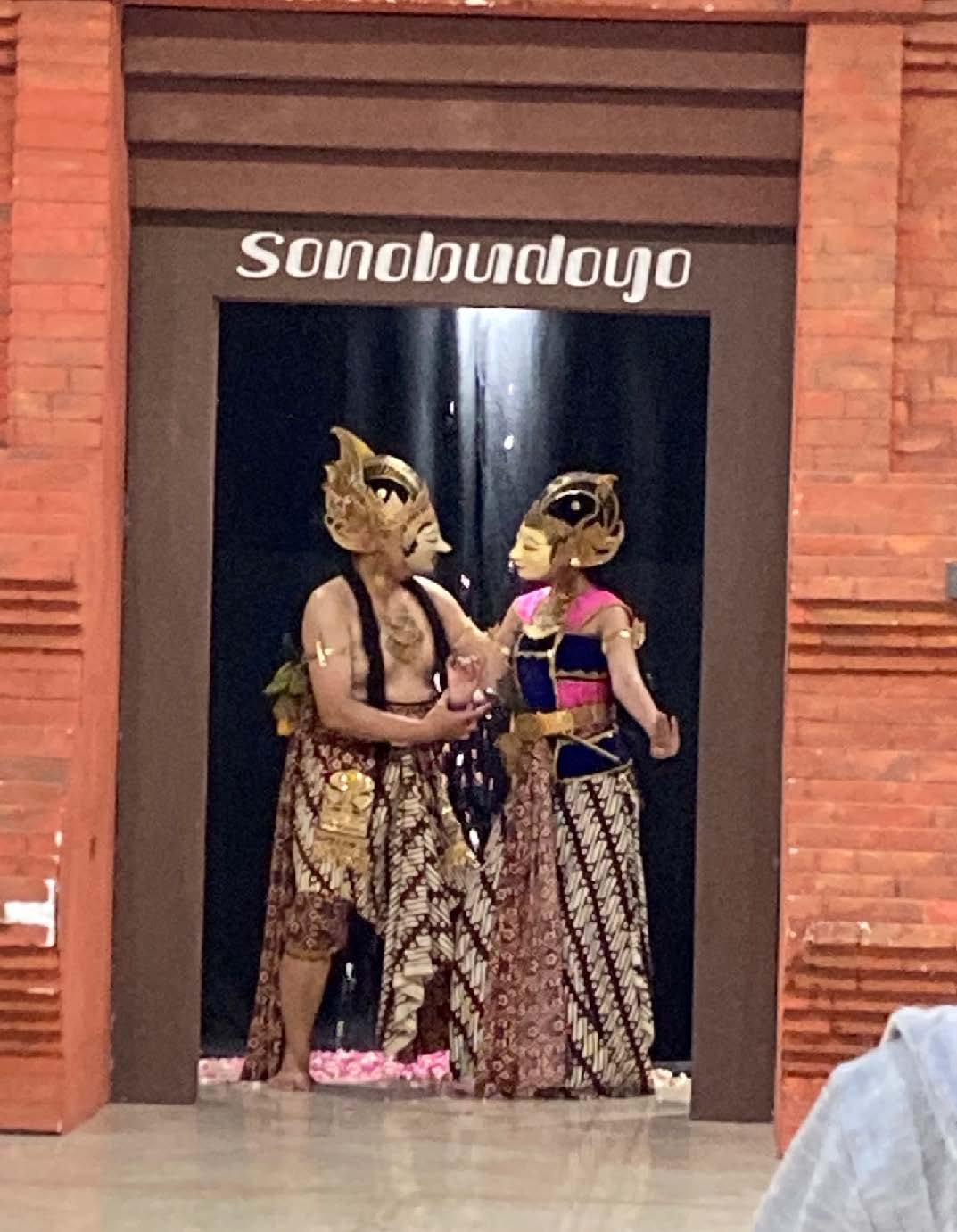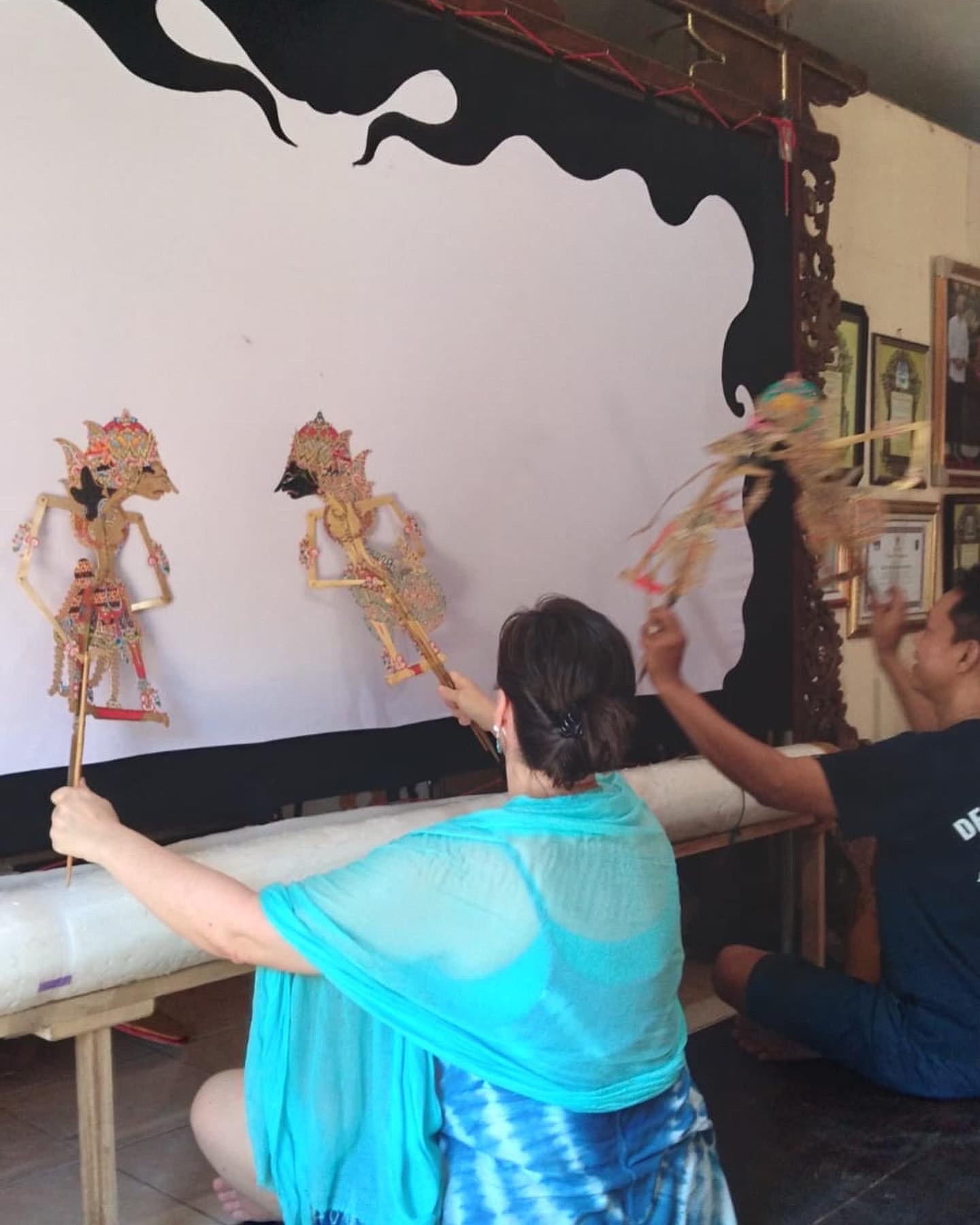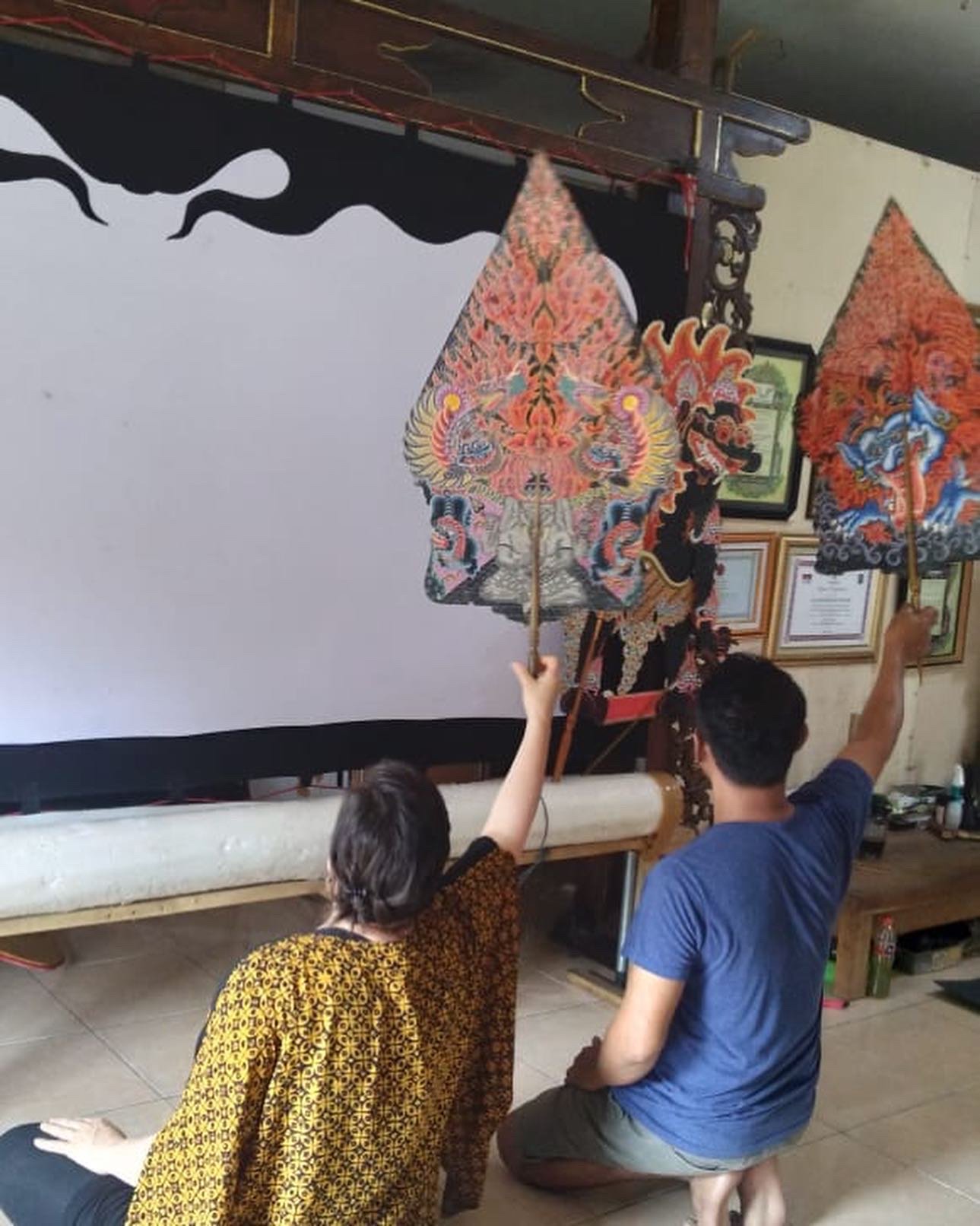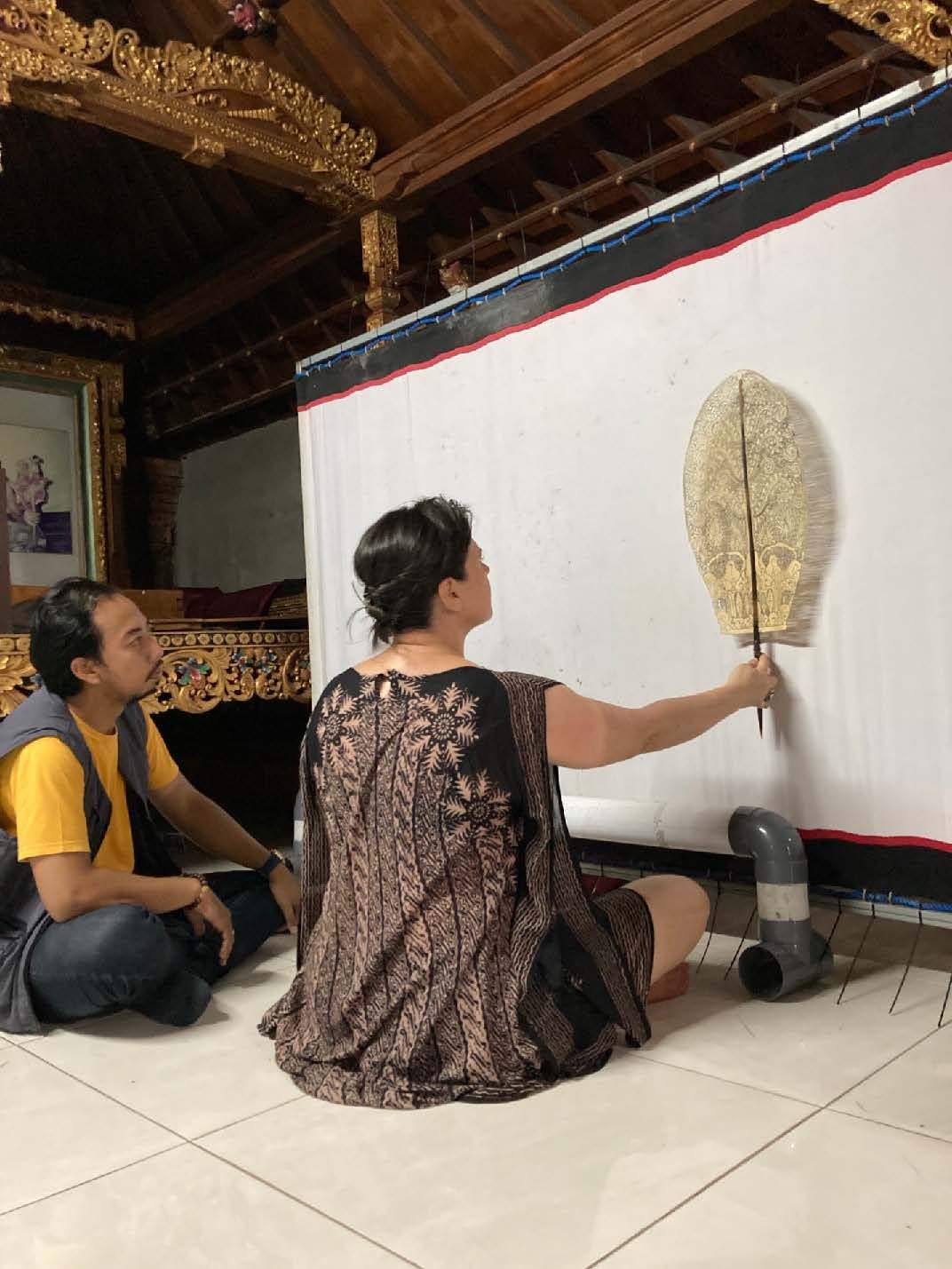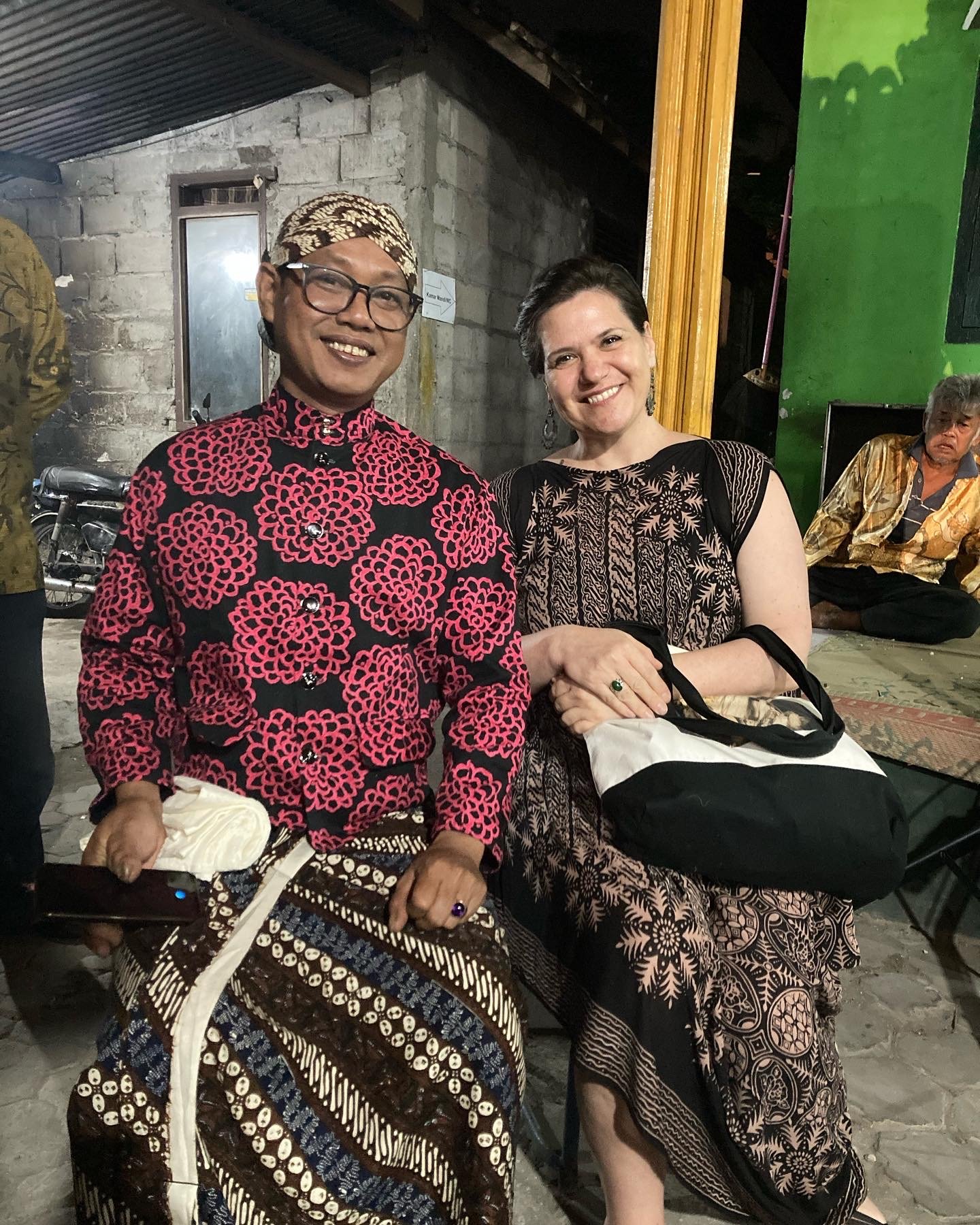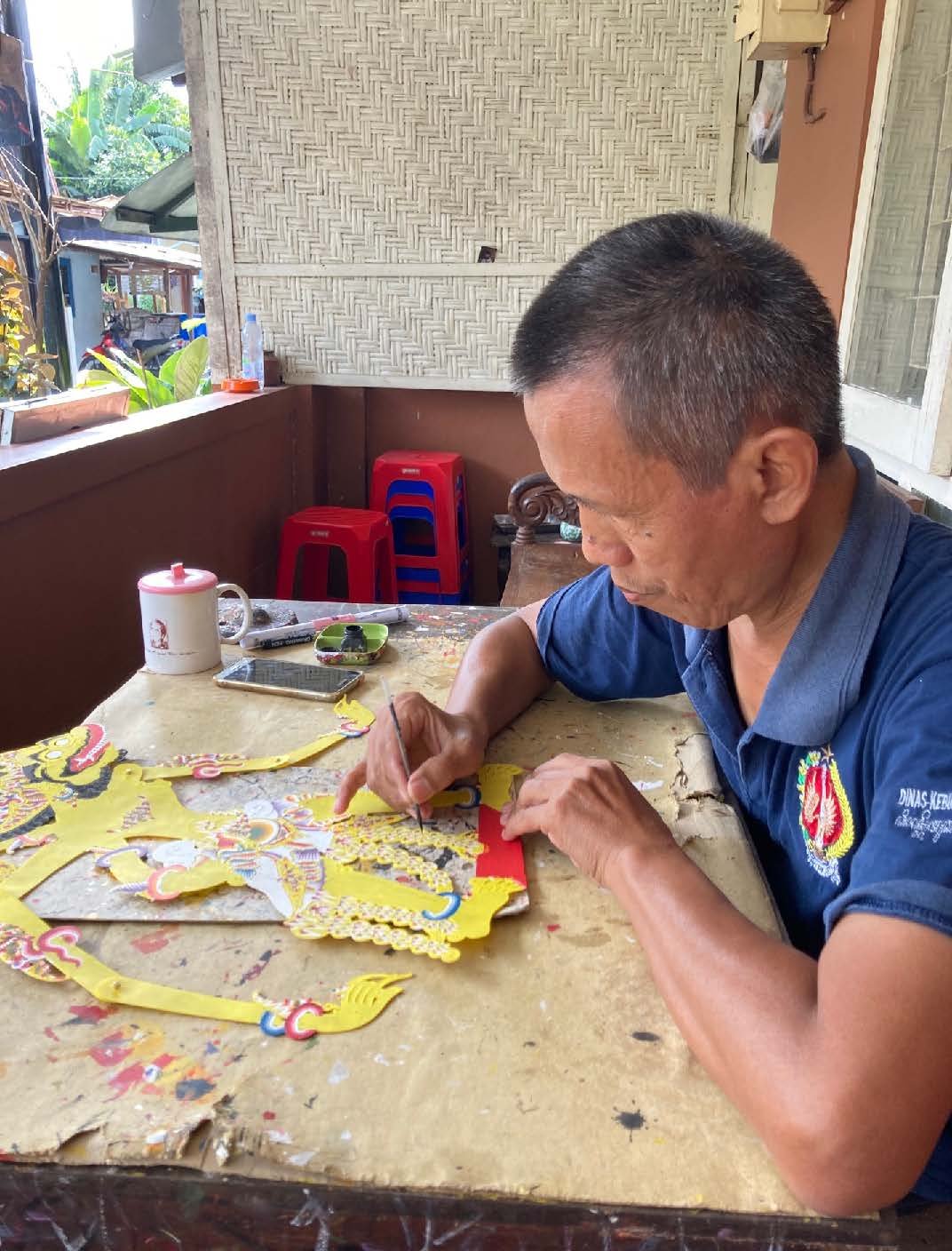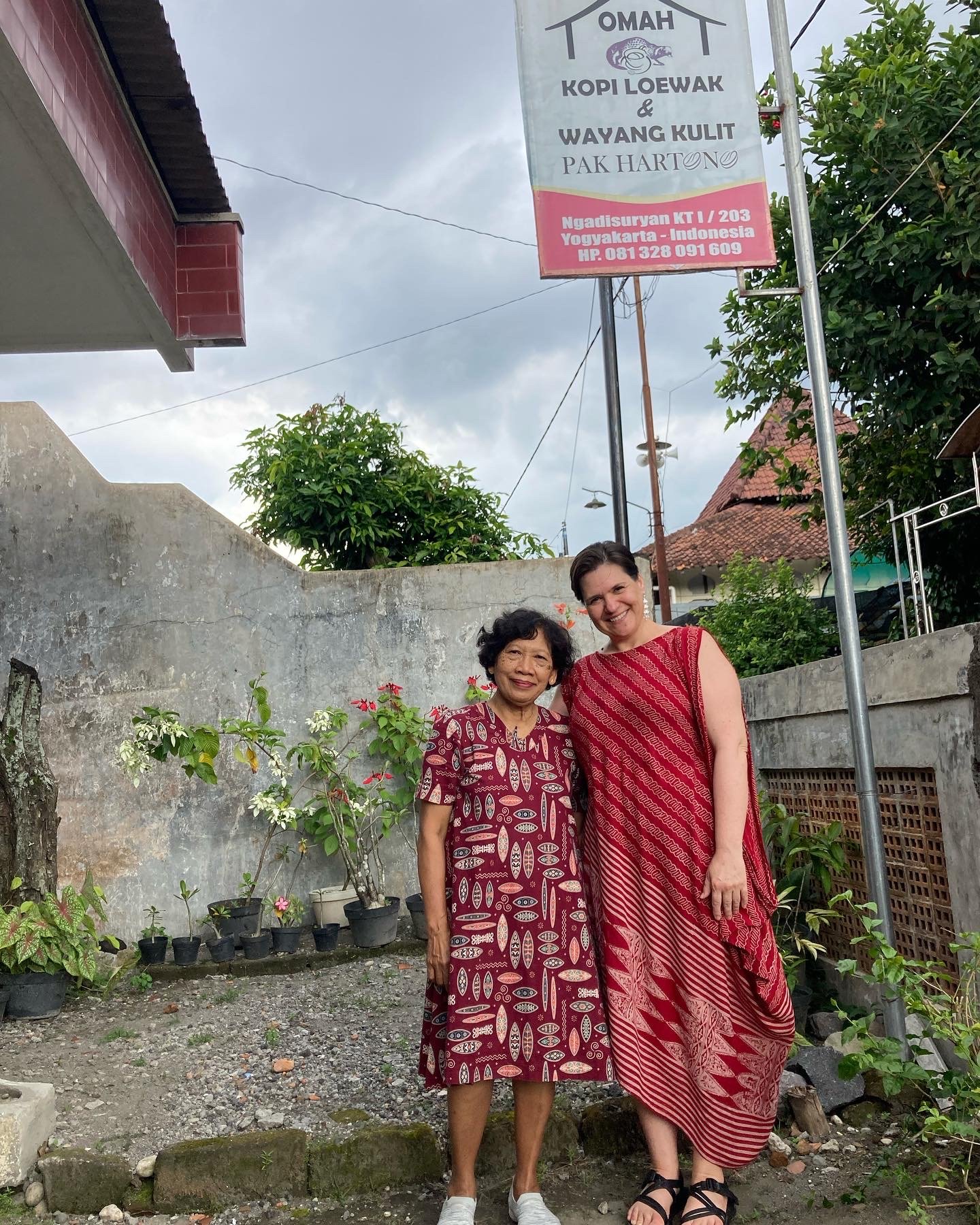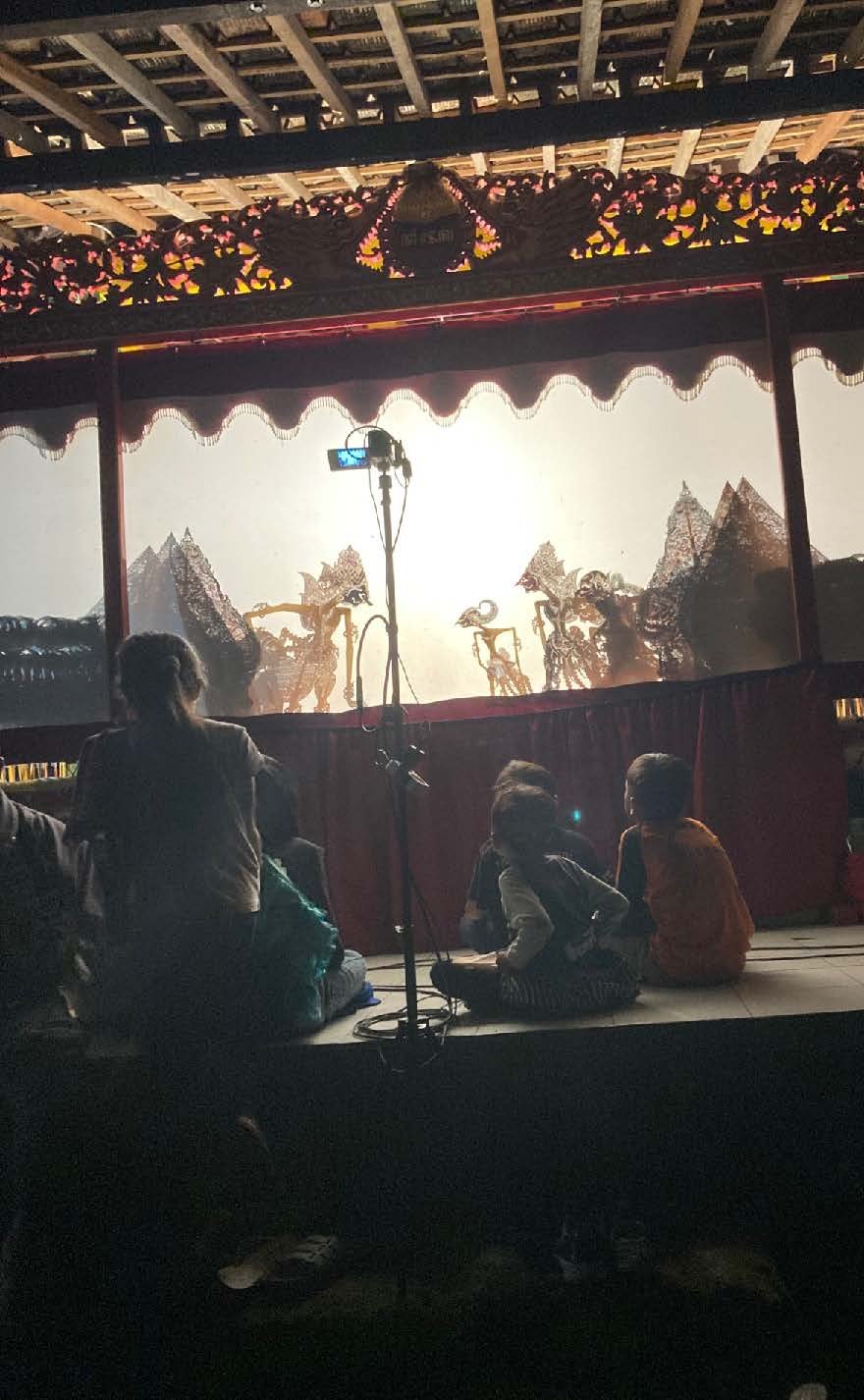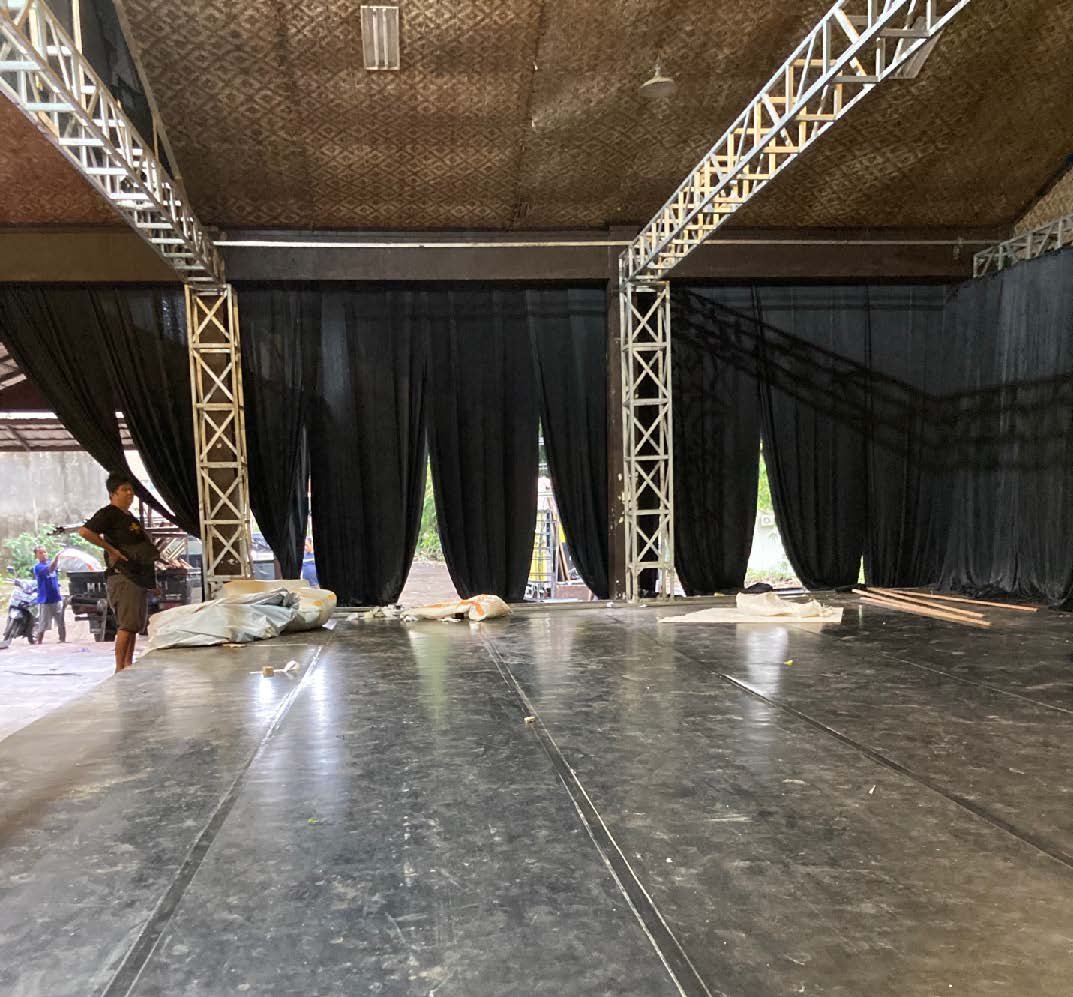NET/TEN Shareback: Margarita Blush - A Theatre Artist’s Guide to Visiting/Working in Indonesia (Java and Bali)
Spring 2022 Travel Grant
It is undeniable that visiting Indonesia is a treasure trove for a theatre artist! Especially for the theatre artist who works in the realms of physical, visual, and puppet theatre; for the artist who searches expression beyond realism and naturalism.
For me, the experience was so rich that I still, weeks after my return, have the feeling that my whole self has been exploded and the pieces are floating in slow motion in space, trying to reassemble. I experienced a completely different world, and most strikingly, a completely different way of engaging with theatre.
I would like to share with you my experiences and observations with the hope that they can help you in preparation for traveling or working in Indonesia. At the same time, I am aware, and please know that yourself – 1) Nothing can truly prepare you until you are there; 2) Everyone’s experience will be different!
My experiences and explorations in Indonesia followed two main trajectories – traditional and contemporary theatre. In order to delve into both, I engaged with artists, scholars, and community members. I watched traditional and contemporary theatre productions. I ventured into cultural sights, museum, as well as shops, food stalls, cafes, restaurants, villages, and streets. Every category of my shareback (below) will have these two aspects – the traditional and the contemporary.
Contemporary theatre approach:
There is a strong movement toward and desire for contemporary puppet theatre in Java and Bali. Artists are experimenting, producing, and performing a variety of contemporary puppet shows. Some weave traditional with contemporary aesthetics and styles. Some lean very Western. Some find their own identity. Observing Papermoon’s work (rehearsals, workshops, shows), as well as other contemporary work, I am left with the impression that the passion for the art form is very strong. At the same time, technique and knowledge – in directorial, performance, and puppet animation/manipulation, is limited. It seems that artists are searching and discovering expression that is of the moment; they often don’t understand where it comes from and how it can be repeated. There is a disproportionate talk of finding the work through “feeling” and “emotion,” rather than technique and conceptual approach. I saw a tremendously fertile ground for pedagogic, performance, and directorial exchange and development.
Traditional theatre approach:
Traditional theatre and performances are woven into the life of the community. It is special, but not precious. It is divine and mundane and the same time. The mixture is almost incomprehensible to the Western worldview. I was invited by the dalang I was studying with – Ki Catur Benyek – to a traditional show, organized by a patron in a nearby village. As I arrived at the performance place, I saw a stage erected with trusses in the middle of a large field. Lights, sound boards, speakers, tech tables, monitors, cables surrounded the traditional gamelan orchestra, consisting of more than 30 musicians and singers. Hundreds of chairs – some occupied, some not yet, were welcoming the audience. A bouncy house nearby was crawling with children. Parked motorbikes and cars occupied a big portion of the field. I was greeted by the producer of the event, who proudly welcomed me and introduced me to the patron of the event, who was seated in a central location. He quickly took me to the dalang, who was dressed in beautiful traditional costume, finished by a keris sword, tucked in his belt on his back. He looked striking and at the same time, he was casually engaging in conversation, smoking a cigarette and not “preparing” for the show in any visible way. Moments later, the show began with a traditional ritual, the dalang took his place, the orchestra started playing and the all-night-long show began. It was beautiful, and at the same time, so very casual – people continued conversation, children running, people eating, smoking (including the dalang and orchestra members). Some people were intently watching, some were not. The feeling that I was taken by was one of “this is just part of life and we have come together to do something that is done, has been done, and will continue to be done as part of our culture.” No fuss, no preciousness, just a community celebrating together. This is something I will be thinking, contemplating, and unraveling for the rest of my artistic life.
Artists:
Indonesian people and open and giving. That is true for artists as well! They are happy to engage, to share, to give. They are humble and kind. There are so many different artists and artisans in these realms – mask theatre, shadow puppet theatre, dance, music. You could find many by just venturing the streets of Yogyakarta (the cultural capital of Java). You could also make contact before you go (or once you are there by asking) and arrange to meet with artists for one-on-one learning. This is how I studied traditional wayang kulit (shadow puppetry) with a 4th generation dalang - Ki Catur Benyek. There are also contemporary theatre companies and artists – my main grant partner was Papermoon Puppet Theatre in Yogyakarta. If you make contact with one artist and ask, I am pretty sure that they will find and connect you with a specific artist that you are looking for.
Performances, Technique, Audiences:
Watching traditional performances is incredible! The exquisite technique, gorgeous costumes, intriguing music, performers’ physical beauty, and overall artistic stylization is phenomenal! Pure pleasure and fest for the senses. I recommend that you watch every style of traditional performance you can! I watched all available shows at the Sonobudoyo Museum in Yogyakarta, a traditional shadow show in the outskirts of the city (invited by my dalang), a Kecak show at the Uluwatu temple in Bali. There are some attempts to mix the traditional with contemporary in order to attract the new generation(s), which I find to be not compelling – such examples are: - Wayang Orang (wayang kulit with real human performers instead of puppets) - Watching wayang kulit from behind the screen only! Instead of watching the shadows, contemporary audiences prefer to watch the dalang and the gamelan orchestra from behind. It is interesting, but not nearly as magical as the shadow work.
Watching contemporary work was more of a mixed experience for me. The aesthetics ranged from gorgeous to kitschy, however, the main issue for me was the lack of technique, sense of performance cohesion, rhythm, and tightness.
Indonesian audiences are kind and generous! They appreciate the work of theatre artists! At the same time, when watching any theatre in Indonesia, be prepared that local audiences will be on their phones almost the whole time! It was unreal how widely accepted it is to be on your fully bright screen while watching a show.
Venues and Technical Aspects:
Traditionally, theatre is Indonesia is performed outside. There are (often very beautiful) outdoor pavilions that host traditional shows, as well as some contemporary work. You might be asked to perform in some of those. Then really prepare – see “environment” above. Being an audience in those settings is a bit easier, yet it is still challenging because of the heat and humidity. There are also “Western style” theatres – you could do yourself a favor and ask to perform in one of those if possible. The technical aspect is challenging in Indonesia - bad ladders, very limited lighting, lighting techs who are not used to any complicated programing of cues or dramatic lighting (Most often, performances have just general lighting (sometimes harsh) or super limited cues. Be prepared to work hard, compromise, and/or simplify!
Resources:
Papermoon Puppet Theatre: https://www.papermoonpuppet.com/
Sonobudoyo Museum: https://www.sonobudoyo.com/en
Ki Catur Benyek: @kicaturbenyek
Uluwatu Temple Kecak Dance: https://www.pelago.co/en-ID/activity/plk7y-uluwatu-kecak-fire-dance-tickets-bali/?utm_source=google&utm_medium=cpc&utm_campaign=acq-gg-apac-id_-_id-apac-en-kw-prod-activities-exact&utm_term=prod_uluwatu-sunset-kecak&utm_content=uluwatu%20sunset%20kecak%25



